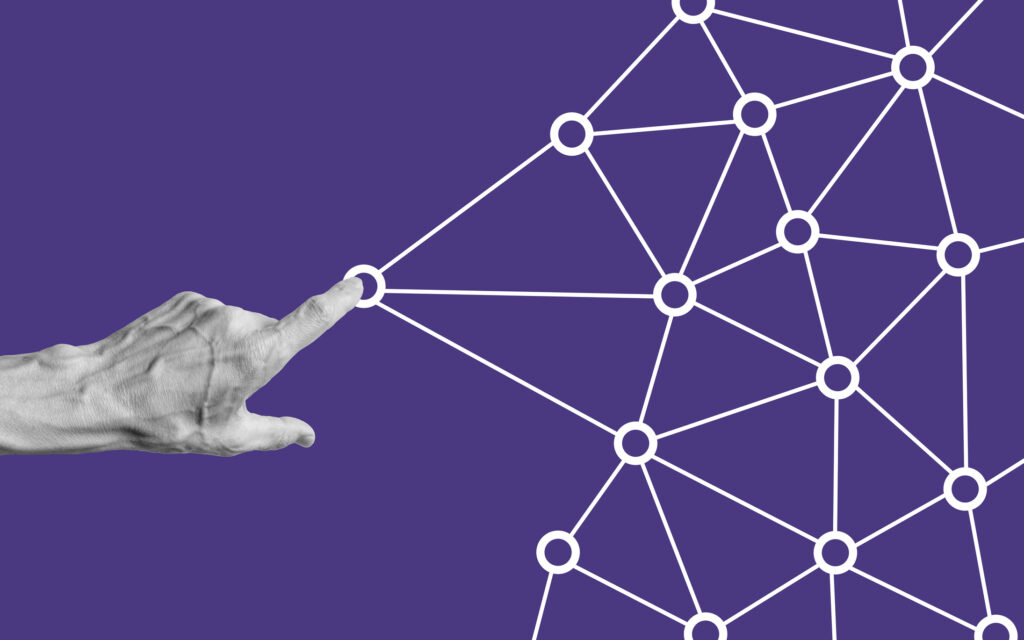Data helps you build great customer experiences. But not all data is the same. You can break data into three (and sometimes four) categories: first-party data, second- and third-party data, and the latest, zero-party data. Each data type confers a different set of benefits and challenges. For now, let’s dive into the most important one: first-party data.
Peter has been thinking about getting a new sound system for several months. He found your website searching and has spent hours online looking at the different types of systems–the features offered, the price, the warranty, and more–trying to decide which one he wants to buy. Your site is one of his favorite places to do research, because you offer lots of guidance and information. He even subscribed to your newsletter and downloaded your mobile application.
One day, he was taking a walk and came into close contact with your store. Because he has an account through the mobile app, the app knows he is close to a store and sends him a notification that the sound system he has spent the most time looking at is on sale in the store. He goes in and buys it. This is the value of first-party data.
What is First-Party Data?
Let’s start with a basic definition. First-party data is data you collect directly from your customers and audiences through interactions with them. It includes demographics, purchase history, website activity, interactions, interests, mobile app data, and behaviors–such as clicking on an email or reading an article on a website. You collect this data through sales of your products and services, through support processes, forms on your website, subscriptions, surveys, social media connections, and so on.
Other data types–second-party, third-party–are not collected directly from your customers, but are indirectly obtained from other sources. Because you get first party data directly from customers, it is your most valuable.
You own first-party audience data (in as much as you can own someone else’s information). Because you collected it directly from the customer, you know that it’s high quality, accurate, and relevant to the products and services you offer.
First-party data is stored in your business systems: your CRM, marketing automation platform, call center systems, and other sales, support, and marketing applications.
Why First-Party Data is More Important Than Ever
First-party data has always been the most valuable type of data a company has, but in recent years, it has become even more critical.
Leveraging Data to Create Personalized Experiences
Customer experience is continually evolving, largely because consumers are getting smarter. The internet has given them more access to information to help them make purchase decisions, and their expectations about how companies should treat them have grown.
Consumers willingly trade their information for more relevant, personalized experiences. With access to first-party data, you have accurate, relevant data in your hands to build those experiences. A poor customer experience often results in the customer going elsewhere, taking their information and business with them.
Privacy and its Impact on Data Collection
The EU privacy law – GDPR – kicked off a whole new world of privacy expectations from consumers. Under data privacy regulations like GDPR, you have to ask consumers for permission to collect and store their data, tell them why you are collecting it and how you will use it. The California privacy law (CCPA) came into effect later, and while it isn’t identical to GDPR, it has also affected how and why companies collect consumer information.
Consumers now expect companies to respect their data and only share it if they believe you will store it securely and are transparent on how you will use it. As a result, many consumers have become much more selective about who they share their data with and what data they share.
This gives companies that have first-party data an advantage. Because your organization collected it, you can use it for your marketing, even if the customer doesn’t want it shared. But it also means you have an obligation to use it wisely.
Uses Cases for First-Party Data
There are many examples of how you can use first-party (1st party) data. Some of these include:
Personalization of web and mobile experiences
Personalization goes far beyond putting a consumer’s first name on a web page or in an email. First-party data includes what products a customer has already purchased from you, enabling you to provide related offers when they visit the website or highlight content related to using those products.
For example, suppose a customer spends a lot of time watching videos on your website. In that case, you know they like video content, and you can highlight more video content on product pages or in the resource section of your website.
Advertising
A lot of advertising leverages third-party data, but with 1st party data, you can deliver better-targeted ads across all your advertising platforms. For example, you could pull a list of customers from your CRM that bought a specific product and target them with a set of ads to a related product. If you want to drive registrations to your new event, you can deliver targeted advertising to your customers first and your newsletter audience.
The key is that the advertisements are hyper-relevant to these audiences because you know them, their interests, and their past behavior.
Predict Consumer Behavior
Predictive analytics enables you to analyze the activity of consumers and predict what they are most likely to do next. For example, by analyzing website traffic patterns, you learn that a consumer typically follows a particular path through the website, viewing certain pages and product information, and is therefore highly likely to buy a certain product. You can then surface content, products, and sales or specials specific to driving that desired behavior.
Audience Insights
Audience insights allow you to look at a group of consumers with similar traits and analyze their activity with your company, whether that’s content they consume, products they purchase, traffic patterns on the website, or something else.
Suppose you know a consumer matches a defined audience, and your analysis shows that the audience spends a lot of time looking at camping equipment during the summer months. With this insight, you can surface sales to this audience related to products that fall into this category.
Audience insights also help you understand what content is working on your website, what features of a mobile application are most popular (or least popular), where shopping cart abandonment happens most often, and more. Use this information to improve experiences, delivering the information, capabilities, products, and services that your audience most wants.
Moving to Cookieless Marketing
A significant change affecting marketers is the end of third-party cookies. Google’s announcement that they will phase out third party cookies from the Chrome browser means companies will not be able to track activity across the web using cookies. Apple also gives consumers the option to block third-party tracking cookies on apps and its Safari browser. And this is only the start.
Marketing needs to evolve past the use of the third party cookies. And that means first party data has become even more valuable. You need to find more ways to get consumers to share more of their information with you to continue to deliver better experiences to them across all your channels. This might include more lead gen type forms, finding ways to get consumers to self segment through registration or preference selection, or other tactics that help you understand your target audiences.
Planning Your First Party Data Strategy
If you don’t have a strategy for your first party data, you need to develop one. Customers may have freely given you this information, but you are responsible for collecting, storing, and using it to build better customer experiences.
To build a first party data strategy, follow these steps:
Define Your Goals and Objectives
The first thing you need to understand is the goals and objectives for your business. Is your goal to sell a certain amount of a product, acquire new customers for a new product or service, improve customer support and build loyalty? Once you understand your goals, you can start to map out the activities and tactics you will perform to achieve them. It’s the activities and tactics that inform the type of customer data you need.
Identify Customer Data Sources and the Type of Data Collected
With goals and objectives defined and mapped to specific activities and tactics, you know the type of data you need. Now it’s time to understand what customer data sources you have and the types of data you collect already. First, look at the systems you currently use and document the data collected by those systems. Include all systems across the company – you might be surprised to find that some of your customer and audience data is hidden in siloed applications.
A data source mapping project gives you a clear picture of the customer data you have now and the data you still need to collect. Be sure to note if the data was collected under any relevant privacy regulations.
Develop a Data Standardization Strategy
With customer data spread across systems in the company, you will find that similar data is often stored in different formats, updated on different schedules, and is usually not consistent.
To leverage this data in your marketing and sales programs, it must be integrated, for consistent access across all the systems that store it. If it’s not accurate and the same across all systems, you risk building customer experiences on different data, leading to frustrated and confused customers.
A data standardization strategy defines how each data type should be formatted and stored, and how it’s updated across systems. This strategy also describes how customer data is cleaned and validated, including the tools that you can use for data cleansing.
Implement Tools (Like a CDP) to Manage First-Party Data
When first-party audience data is spread across the company in different systems, it’s challenging to leverage that data consistently across all your customer touchpoints. Implementing a tool like a customer data platform (CDP), which helps you connect all these systems and unify customer data in a central system. You can then build a single view of the customer and leverage tactics to enrich your first party data to improve experiences further.
Marketing, sales, customer success, and other groups can then access this centralized data to ensure the experiences they create and deliver are all built on the same information, providing a consistent, accurate, and relevant experience across all channels.
First-Party Data is Essential for Success
Creating experiences that your customers appreciate and delivering value is critical to business success today. First-party data is the key to both of those things. Without it, you don’t truly know or understand your customers, and you’re flying blind on what will make them want to buy from you.
But remember your data is only as good as your management of it, so you need to develop the right strategy to collect, store, manage, and share your first party data across the company, so every department delivers consistent, relevant, and impactful customer experiences.



